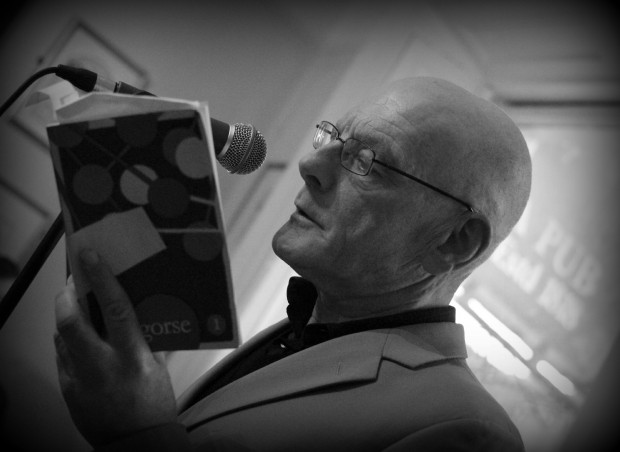Introducing: Desmond Hogan

Desmond Hogan is “probably the most famous Irish writer you’ve never heard of.” Author of five novels, including The Ikon-Maker and The Leaves on Grey (both Lilliput Press), and ten short story collections, most recently The House of Mourning & Other Stories (Dalkey Archive), Desmond, says the New York Times, “writes about Ireland with a compressed lyricism that has the almost excessive tendency of a dream and the gritty ferocity of anger.” His stories, say Dalkey Archive, “merge past with present, landscape with mindscape — distinctly Irish and burdened by history, while exhilaratingly and wholly universal and modern.” His story for gorse, ‘Thornback Ray,’ is a retelling of a 1970s true life crime, that he’s brought back to its Dublin roots.
‘You’re a fucking nuisance,’ a woman with hair arrangement like a boxing glove, in black and white, langue-de-chat harem leggings, addresses her small child in its pram as she passes.
My informant diverges to namesakes of the boy’s alcoholic father, probably not his people at all.
‘They lived in Brigid’s Mansions. Sheriff Street. Long knocked down. The eighties. The men were dockers. The women had stalls. Sold Dublin Bay prawns. Sold anything they could get their hands on. They’d sell yourself if you stood still. They were funny people. Had a sense of humour. You had to have. Some of them got Mickey money.’
(Compensation for alleged abuse in Industrial Schools.)
‘There were Robin Hoods in those days. Commandos from the Second World War. They used catapults, ball-bearings, add traps with fishing tackle and clothes pegs for the Christian Brothers and Guards who came to take the boys away.’
As slave ships sailed up rivers in West Africa in the eighteenth century so young strawberry faced guards went into Sean McDermott Street, picked up boys, sent them to Industrial Schools, where they sought the warmth of the chapped as the pied wagtails sought the warmth of the Christmas lights on the plane trees on O’Connell Street.
‘There was one fellow who was in Artane for stealing. He was kicked to death. The mother went to the Brother and asked for money for the burial. The Brother said he could be buried in Artane. The mother got a hire purchase coffin. He was buried in a pauper’s grave in Glasnevin.
There was a man who was in an Industrial School and he married a woman who was in an Industrial School. They had six children. Both walked down the steps into the Liffey.’
Issue one of gorse is available now.
